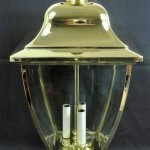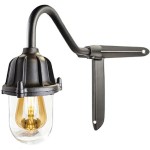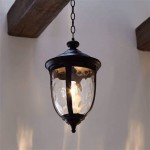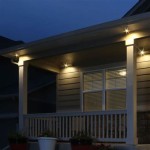Waterproofing Painted Wood Outdoors: Essential Aspects to Consider
When it comes to outdoor wooden surfaces, waterproofing is essential for protecting them from the damaging effects of moisture. Painted wood is particularly susceptible to water damage, as the paint can seal in moisture and lead to rot. To ensure the longevity of your painted wooden surfaces, it's crucial to understand the key aspects involved in waterproofing them effectively.
This article will delve into the essential aspects of waterproofing painted wood outdoors, providing valuable insights for homeowners and contractors alike. We will explore the importance of surface preparation, choosing the right waterproofing sealant, applying the sealant correctly, and maintaining the waterproofed surface to ensure long-term protection.
Essential Aspects of Waterproofing Painted Wood Outdoors
1. Surface Preparation: Before applying any waterproofing sealant, it's essential to prepare the painted wooden surface. This involves cleaning the surface thoroughly to remove any dirt, debris, or mold. Any peeling or flaking paint should also be scraped off to create a clean and sound surface for the sealant to adhere to.
2. Choosing the Right Waterproofing Sealant: Selecting the appropriate waterproofing sealant is crucial for effective protection. There are various types of sealants available, each with different properties and applications. Water-based sealants are ideal for porous surfaces, while solvent-based sealants provide a more durable and water-repellent finish. Consider the type of wood, the exposure to moisture, and the desired finish when selecting a sealant.
3. Correct Application of Sealant: To achieve optimal waterproofing, the sealant must be applied correctly. Always follow the manufacturer's instructions for mixing and application. Use a high-quality brush or roller to apply the sealant evenly, avoiding thick or thin spots. Allow the sealant to cure according to the manufacturer's instructions before exposing it to moisture.
4. Regular Maintenance: Waterproofed painted wood surfaces require regular maintenance to ensure long-term protection. Inspect the surface annually for any signs of wear or damage. Clean the surface regularly to remove dirt and debris, and reapply sealant as needed to maintain its waterproofing properties. By performing regular maintenance, the longevity and effectiveness of the waterproofing system can be significantly enhanced.
In conclusion, waterproofing painted wood outdoors requires a methodical approach that involves proper surface preparation, the selection of the right waterproofing sealant, correct application, and regular maintenance. By carefully considering these essential aspects, homeowners and contractors can effectively protect their painted wooden surfaces from the damaging effects of moisture, ensuring their durability and aesthetic appeal for years to come.

How To Waterproof Wood With Oil Sealant Or Stain And Sealer Bob Vila

How To Waterproof Wood With Oil Sealant Or Stain And Sealer Bob Vila

Waterproof Wood Learn How To Make Nerolac

Emperor Paint How To Waterproof Outdoor Wood

How To Waterproof Wood With Oil Sealant Or Stain And Sealer Bob Vila

Waterproof Wood Learn How To Make Nerolac

How To Waterproof Wood 3 Ways

How To Waterproof Wood With Oil Sealant Or Stain And Sealer Bob Vila

How To Waterproof Your Wood Deck True Value

Waterproof Wood Learn How To Make Nerolac







